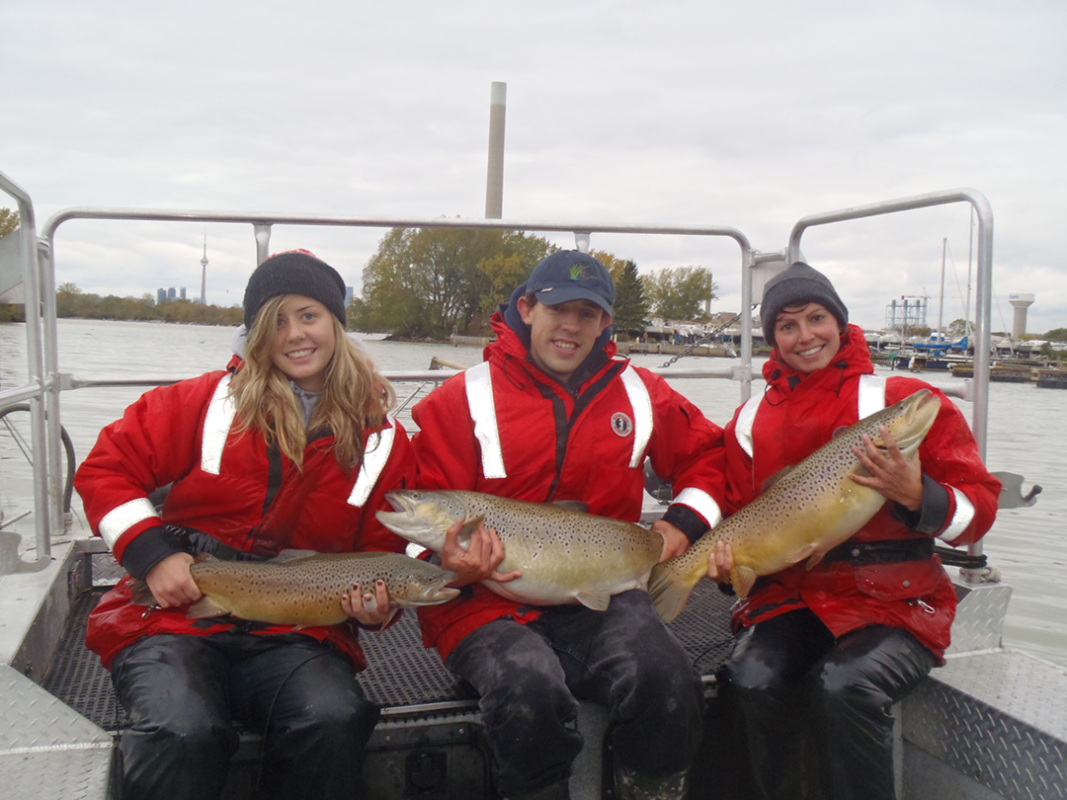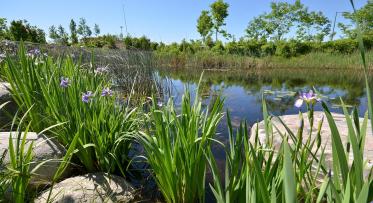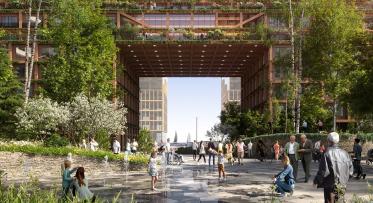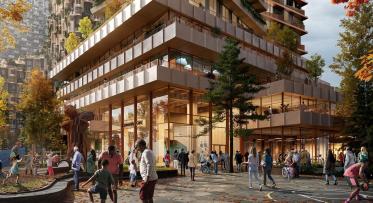Toronto's Waterfront is Getting Healthier
POSTED: APRIL 7, 2020 I SUSTAINABILITY
By Valerie Francella - Program Manager, Remedial Action Plan · Toronto and Region Conservation Authority (TRCA)
A common misconception among Torontonians is that our lakefront is seriously polluted, and that you would be foolish to swim at a Toronto beach or eat fish caught from its shores. In reality, 30 years of remediation, restoration and revitalization have improved water quality, restored habitats for fish and wildlife, decreased contamination of sediments, and enhanced waterfront access.
Among the successes: lower levels of e. coli at all Toronto beaches thanks to better sewage treatment and stormwater management; decreased PCB levels in fish so that most resident species are now safe to eat; and the creation of over 800 hectares of fish and wildlife habitat throughout the Toronto and region watersheds.
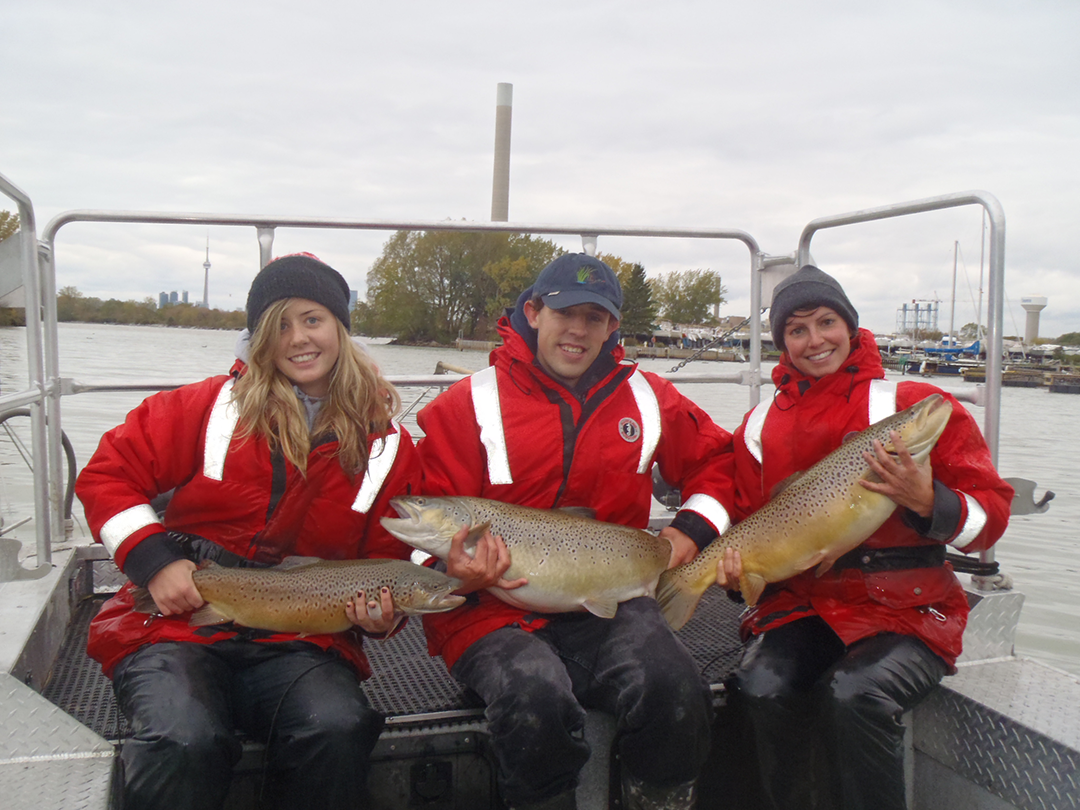 Fishing in Toronto is now more realistic as diversity of species and water quality both improve. TRCA’s electrofishing crew catches brown trout during a transect at Ashbridge’s Bay.
Fishing in Toronto is now more realistic as diversity of species and water quality both improve. TRCA’s electrofishing crew catches brown trout during a transect at Ashbridge’s Bay.
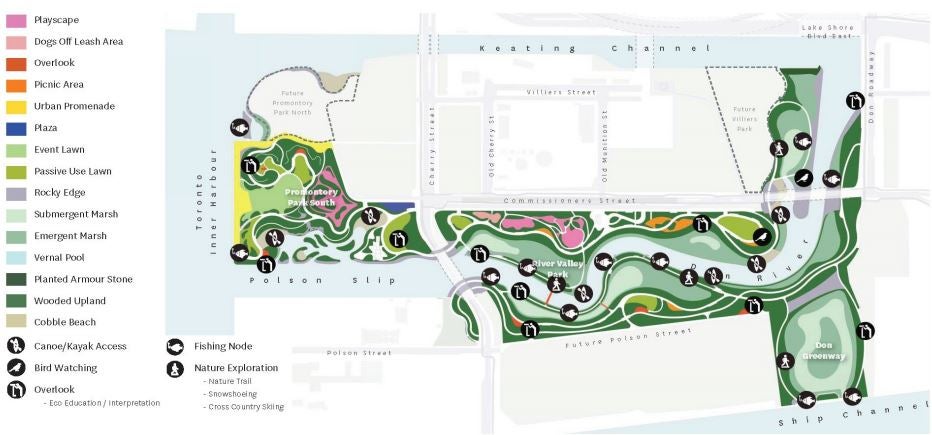 This map shows proposed future locations of fishing nodes (as of June 2019) once the new Don River is complete in 2024. To see more on the latest plans for the river and parks, click here.
This map shows proposed future locations of fishing nodes (as of June 2019) once the new Don River is complete in 2024. To see more on the latest plans for the river and parks, click here.
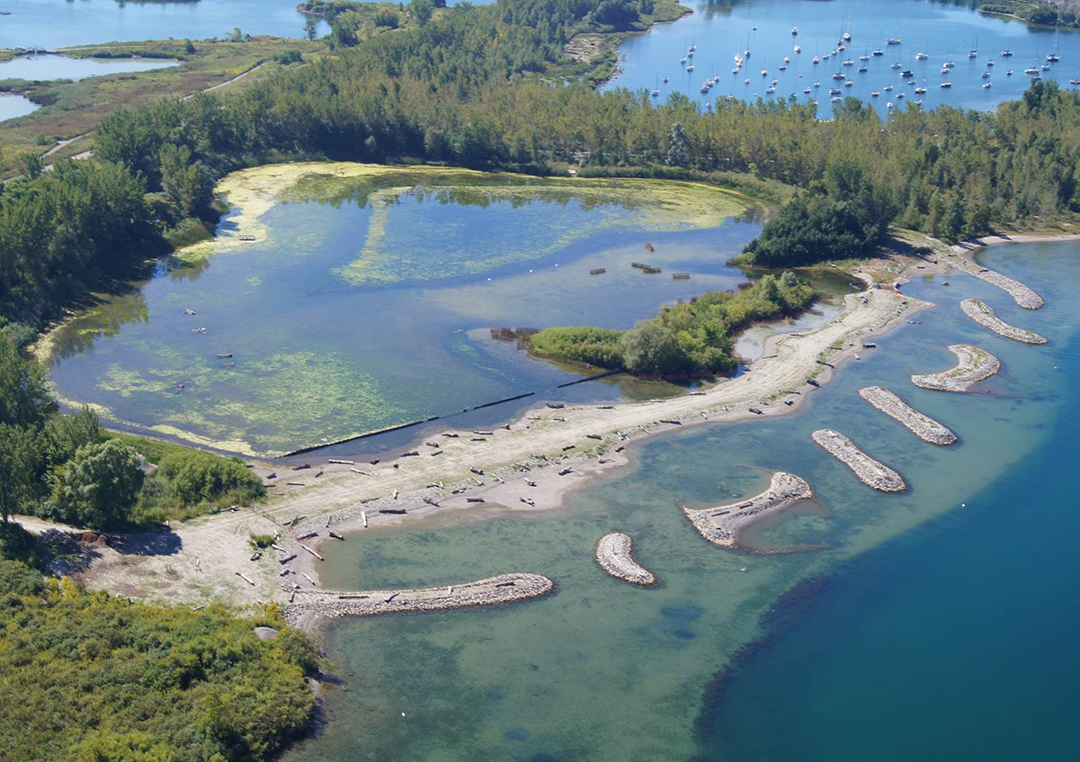 Wetlands in Tommy Thompson Park in the Port Lands will soon become part of a larger network of green space thanks to Port Lands Flood Protection.
Wetlands in Tommy Thompson Park in the Port Lands will soon become part of a larger network of green space thanks to Port Lands Flood Protection.
Several new projects on the waterfront will keep that trend moving in the right direction. This includes the City’s Don River and Central Waterfront project, which will keep combined sewer overflow out of waterways, and Waterfront Toronto’s Port Lands Flood Protection project. The seven-year, billion-dollar project will restore the mouth of the Don River to a more natural state. Moreover, ongoing wetland creation and enhancement projects at Tommy Thompson Park, as well as wetland, cobble shoreline and submerged structural habitat additions in Ashbridges Bay will give Toronto’s resident and migrant fish more space to spawn and feed.
To understand how these projects and others contribute to a healthier waterfront, consider it in the context of the Toronto and Region Remedial Action Plan’s criteria for healthy waterways.
Toronto and Region is one of 43 Areas of Concern in the United States and Canada, identified by the International Joint Commission on the Great Lakes (IJC). This means that the city poses a threat to the health of the Great Lakes.
Areas of Concern are measured against 14 potential impairments, each of which was classified as impaired, not impaired or requiring further assessment. Toronto received eight impaired criteria, and three that required further assessment. Today, five impairments remain: degradation of fish and wildlife populations, loss of fish and wildlife habitat, eutrophication and undesirable algae, beach closures and fish consumption restrictions.
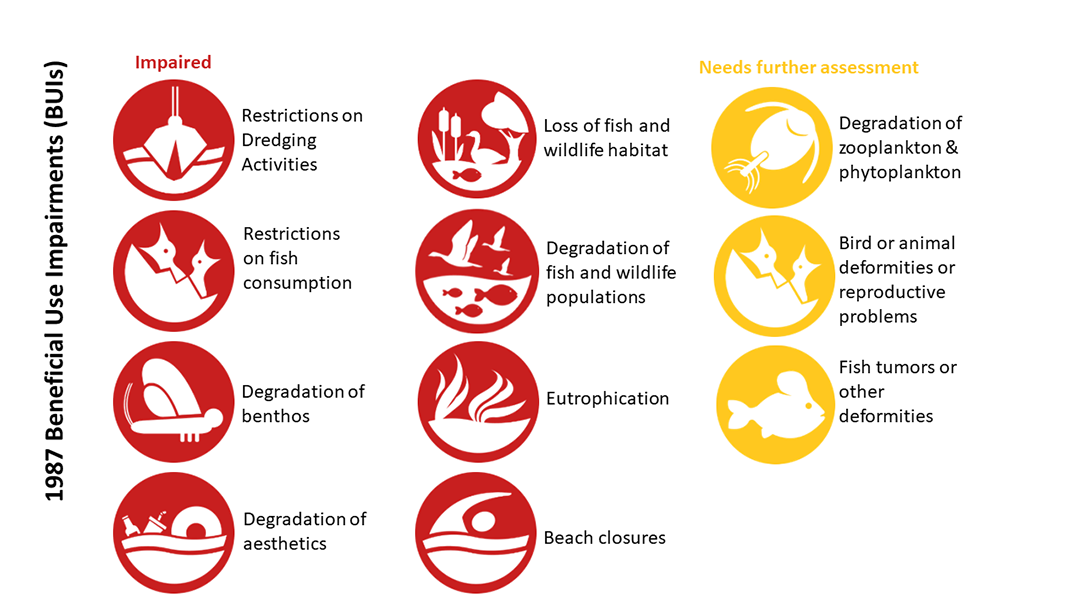
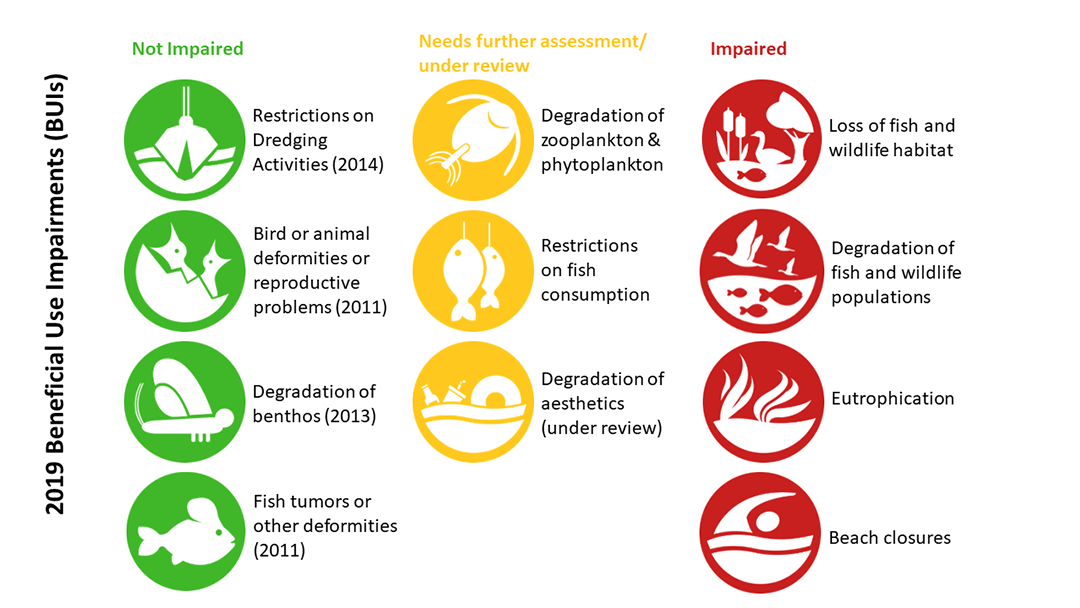
Compare the status of Toronto’s Beneficial Use Impairments in 1987 (top) to the same criteria in 2019 (bottom) and you can see that there have been improvements.
Since the late 1980s, the Remedial Action Plan has been working with partners to restore Toronto’s waters, fish, wildlife and habitat. And according to the International Association for Great Lakes Research study, this work is paying off.

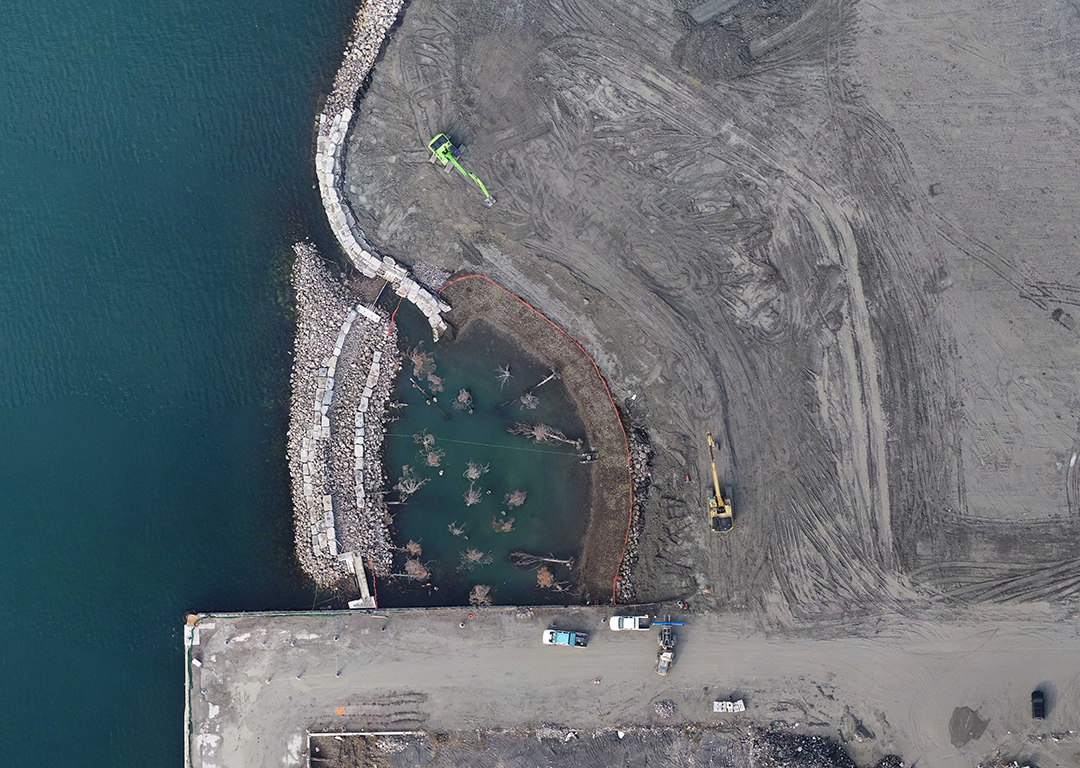
Top: Designs for the west cove. Part of Waterfront Toronto’s Cherry Street Lakefilling project, it will become a wetland, providing new habitat along the shoreline. Bottom: The newly completed cove includes habitat wood, wetland vegetation, finely graded stone materials, and a rocky wave break bound by carp gates that stop the invasive fish species from entering the cove.
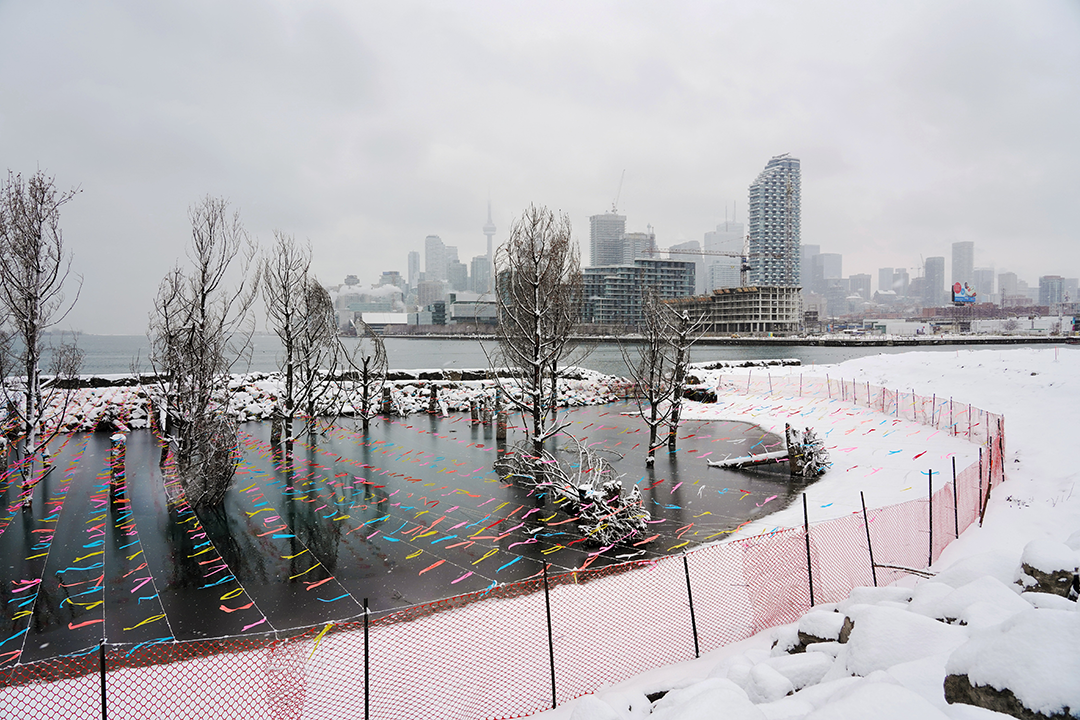 Part of Port Lands Flood Protection, this newly completed protected cove at the former Essroc Quay is creating homes for aquatic species and birds in Lake Ontario’s Inner Harbour near downtown Toronto.
Part of Port Lands Flood Protection, this newly completed protected cove at the former Essroc Quay is creating homes for aquatic species and birds in Lake Ontario’s Inner Harbour near downtown Toronto.
Port Lands Flood Protection will help to further advance the Toronto Remedial Action Plan by constructing fish habitat and supporting fish populations. By creating a new river valley with 9.8 hectares of created wetland, we have an opportunity to reclaim some of the lost historical Ashbridge’s Bay wetland and river mouth that once occupied the mouth of the Don River. New fish coves constructed as part of Cherry Street Lakefilling will contribute to 23.6 hectares of permanent and ephemeral fish habitat. This will provide, for the first time in a century, lost habitat for native fish and wildlife species. The new wetlands and natural river will be ideal spawning, nursery and foraging habitat for fish species such as walleye, bass and perch, as well as other native species both terrestrial and aquatic. Click here to see a list of the different species of aquatic and terrestrial wildlife that will live in the revitalized Port Lands once this project is complete in 2024.


Top: This model shows the wave break that dissipates waves from the inner harbour. This allows the West Cove to become a more hospitable environment for aquatic species. Bottom: This is what the model looks like in real life. The wave break will support a future path connected by pedestrian bridges spanning the carp gates.
Read this article to learn more about new nature and parks in the Port Lands
A rich diversity of fish and wildlife is essential to the healthy environment and to the overall well-being of Toronto, while bringing us closer to achieving our goal of delisting Toronto as an Area of Concern by 2025. In 2019, 24 different fish species were identified in the Don River and around the Port Lands. After Cherry Street Lakefilling was completed along with a new habitat cove, the number of individual fish and fish species caught in this part of the Inner Harbour increased. These results mean that more fish are already feeling at home in the Port Lands. Along with Toronto and Region Conservation Authority, we’ll continue to monitor fish and provide healthy habitats.

